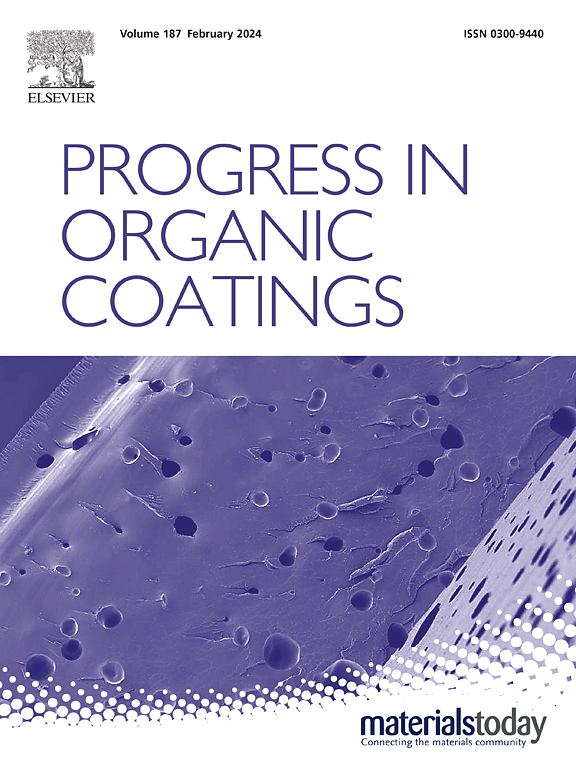Exploring the properties and performance of Lewis base organocatalysts in epoxy/polyester hybrid low-cure powder coatings
IF 6.5
2区 材料科学
Q1 CHEMISTRY, APPLIED
引用次数: 0
Abstract
Low-cure powder coating (LCPC) is a novel, 100 % solvent-free, low-energy coating suitable for heat-sensitive substrates. The inclusion of a curing catalyst in the formulation effectively lowers the curing temperature and time. However, the structural morphology, physical and chemical properties and catalytic mechanism of catalysts still significantly constrain the research and application of LCPC. In this study, we reveal and conclude that the curing catalyst commonly used in LCPC is essentially Lewis base organocatalysts with well crystal form and particle sizes on the order of several tens of microns. The experimental results show the incorporation of different types of Lewis catalysts results in varying curing and surface performance in coatings. Increasing catalyst concentration from 0.08 % to 0.2 % improves curing efficiency at lower temperatures but negatively affects the visual quality of coating films. The HOMO-LUMO energy gap and density functional theory (DFT) transition state calculation indicate that the addition of imidazole type and quaternary ammonium salt type catalysts effectively reduces the activation energy of the curing reaction by promoting the epoxy ring opening via proton transfer and negative halogen ions, respectively. This study represents a systematic and mechanistic exploration of organocatalysts and their impact on LCPC, addressing a gap in academic research and providing insights for future developments in LCPC.

求助全文
约1分钟内获得全文
求助全文
来源期刊

Progress in Organic Coatings
工程技术-材料科学:膜
CiteScore
11.40
自引率
15.20%
发文量
577
审稿时长
48 days
期刊介绍:
The aim of this international journal is to analyse and publicise the progress and current state of knowledge in the field of organic coatings and related materials. The Editors and the Editorial Board members will solicit both review and research papers from academic and industrial scientists who are actively engaged in research and development or, in the case of review papers, have extensive experience in the subject to be reviewed. Unsolicited manuscripts will be accepted if they meet the journal''s requirements. The journal publishes papers dealing with such subjects as:
• Chemical, physical and technological properties of organic coatings and related materials
• Problems and methods of preparation, manufacture and application of these materials
• Performance, testing and analysis.
 求助内容:
求助内容: 应助结果提醒方式:
应助结果提醒方式:


